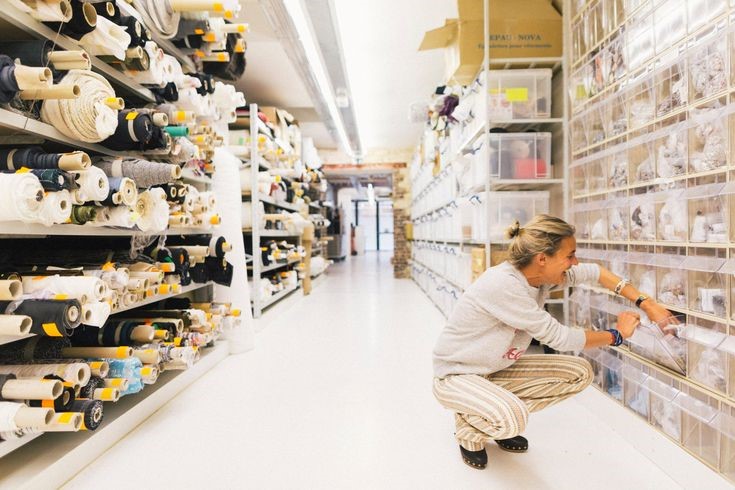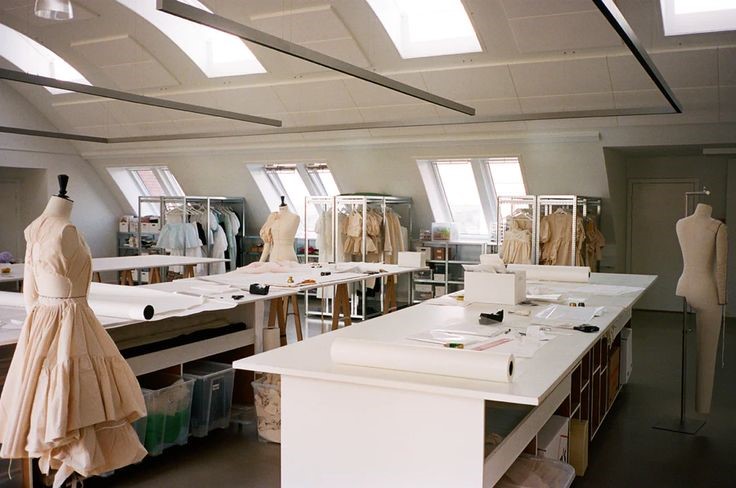Consumers, when deciding to shop, have their own checklist while buying clothes. It can contain new trends, references, color, or most importantly, quality of the fabric used in the garment they are about to purchase. It creates a huge impact on their buying decisions. Any brand would not like their potential customer to change their purchasing decision, especially at the final buying decision stage. Thus, it is important for brands and their manufacturers to put forward best practices in garment manufacturing to create and maintain quality control. There are few steps that cannot be avoided or would lead to apparel production quality deterioration.
9 best practices to ensure quality in garment manufacturing

image credit: pinterest
→ Pre-Production Quality Control
Taking steps for quality control in the early stages of production is an advantage. Manufacturers and designers should not avoid pre-production quality control to ensure accurate quality in the initial stages of production itself. This stage is the base for further production processes, and hence it is important to be error-free and pass the bandwagon smoothly to the next production stage. This step helps to identify and detect any issues in advance.
1. Supplier Selection
Manufacturers should choose suppliers that are trustworthy for resources and raw materials required as best practices in garment manufacturing. They should select suppliers that understand the standard quality requirements for raw materials and fabrics. They should be able to provide you with the needed requirements. Suppliers that have experience and a good track record in the industry and market should be selected for the quality control in the production process.
2. Fabric Inspection
Designers and manufacturers should conduct strict and accurate inspections of raw materials and fabrics in the first stage of production itself to maintain quality control. This should be conducted on the arrival of materials and resources from the supplier to check if there are any defects, like uneven dyeing, a cheap texture, or other defects. It is the preproduction team’s responsibility to check if they meet the mentioned specifications for maintaining apparel production quality.

image credit: pinterest
3. Sample Testing
It is important for manufacturers to follow best practices in garment manufacturing, which includes doing a clear testing process before the actual production process begins. There should be an accurate sample created with the fabrics and raw materials finalised during fabric inspection. When they create the sample piece of garment, it matches the standards of design, fit, and other details. With this, it can be finalised as a piece of reference that will be helpful for production and quality control.
→ Production Quality Control
Once the preproduction process is completed, manufacturers should go for the next step, which is inspecting and monitoring quality control during the actual production process. Inspection of the ongoing process is important as it helps to correct the issues during the production process before reaching the final stage. And thus can detect if the error has occurred before or is about to happen in on going production process.
4. Quality Control Standards
Manufacturers should prepare their quality control standards and mention them to the team for maintaining apparel production quality. So the team is aware of the expected standards and guidelines mentioned in the tech pack. It thus becomes their responsibility to attain and adapt the guidelines and follow the best practices in garment manufacturing while the production process is going.

image credit: pinterest
5. Training and Skill Development
When the production process starts, there might be certain employees and workforce that will be unaware of certain techniques and steps required to be known for executing the process. Manufacturers should thus provide regular training for such teammates and workforce, which is included in best practices for garment manufacturing. So that they will be trained and skilled to use the technique for production and give their efficient contribution for quality control. They will be able to learn and be prepared for the future as well.
6. In-Process Inspection
Manufacturers should hold in process inspection regularly for efficient apparel production quality. During the production process, inspection helps to reduce errors that might occur or affect the quality of garments being produced. This helps to reduce or avoid the rework that might have caused due to inappropriate quality standards. Thus, in-process inspection works as an advantage for quality control.
→ Post Production Quality Control
After the smooth operation of the previous two processes comes post-production quality control. Manufacturers, when conducting a quality control step in post-production, it gives an extra level of assurance that the garments inspected were produced. And thoroughly ready will meet consumer demands and hence be ready for being shipped. This is the last chance where they can make any changes required according to the specifications and work on it instantly.

image credit: pinterest
7. Final Quality Checks
Manufacturers should not forget final quality checks after the production process is completed for accurate apparel production quality. They should conduct a final inspection to assure that the garments being packed would meet the quality requirements and standards of consumers and designers too. After which they can go for the shipment and delivery process of garments being ordered as per demands, which includes best practices in garment manufacturing.
8. Feedbacks From Consumers
Manufacturers should concentrate on feedback received from consumers post-delivery of garments. They should create a system for feedback from consumers. This will help to address and know about the quality issues, if any, and improvements required to enhance the quality control. It can be achieved instantly through feedback forms in shops or suggestion boxes through emails or through a website page to improve it for future apparel production quality.

image credit: pinterest
9. Continuous Improvement And Traceability
Even after post-production processes, manufacturers should maintain all detailed records from the pre-production process to post-production. This will help to trace any issues if they spot them while regularly inspecting and reviewing the quality control process based on best practices in industry. They should stay updated about new developments and technological advancements used for detecting quality issues in production. This will be beneficial for the brand and its manufacturers according to best practices in garment manufacturing.
How Does Maker’s Row Help To Break The Ice?
There is a good amount of competition in every industry. New brands or manufacturers can get intimidated by looking at all the creative minds and talent across the industry.
This is where Maker’s Row comes into play. A platform that empowers and promises to support your creative ideas and guides you through the business process. The right amount of support and guidance is really important in the early stages of production and business. We believe in turning your ideas into real and successful stories, and that helps you to collaborate with manufacturers and factories that understand your project and help you throughout the production process. They make you walk the path with absolutely no hurdles and provide you with other insightful resources that guide you through the industry.

image credit: pinterest
Conclusion
Thus, the above-mentioned are some of the best practices in garment manufacturing that help to maintain and assure quality control in garment production. This not only creates quality efficiency but also helps to rapidly increase the chances of profitable business. It also helps to gain the trust of your consumers and create a loyal customer base for your brand’s collection and overall clothing line. Hence, brand manufacturers should surely include quality best practices in their production process and gain its perks.
You Can Also Read..